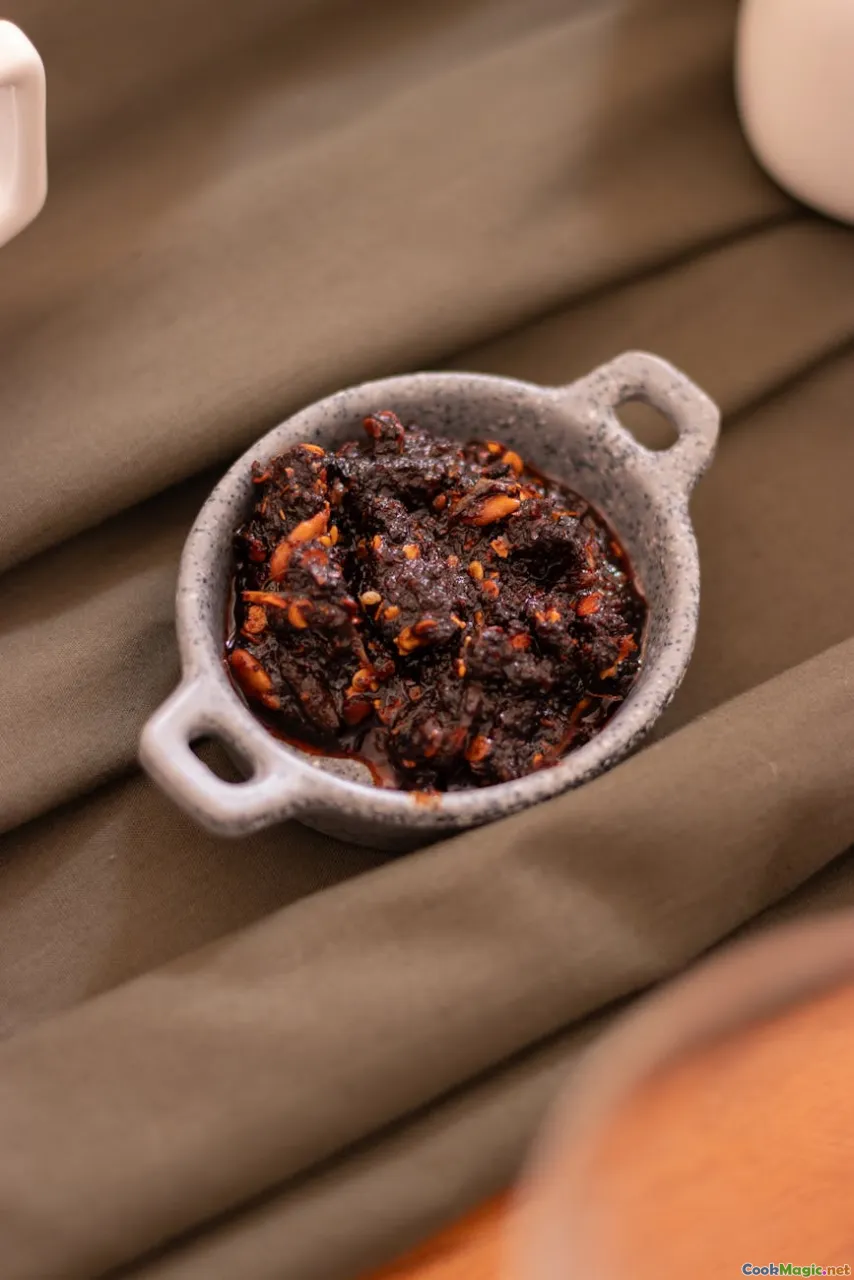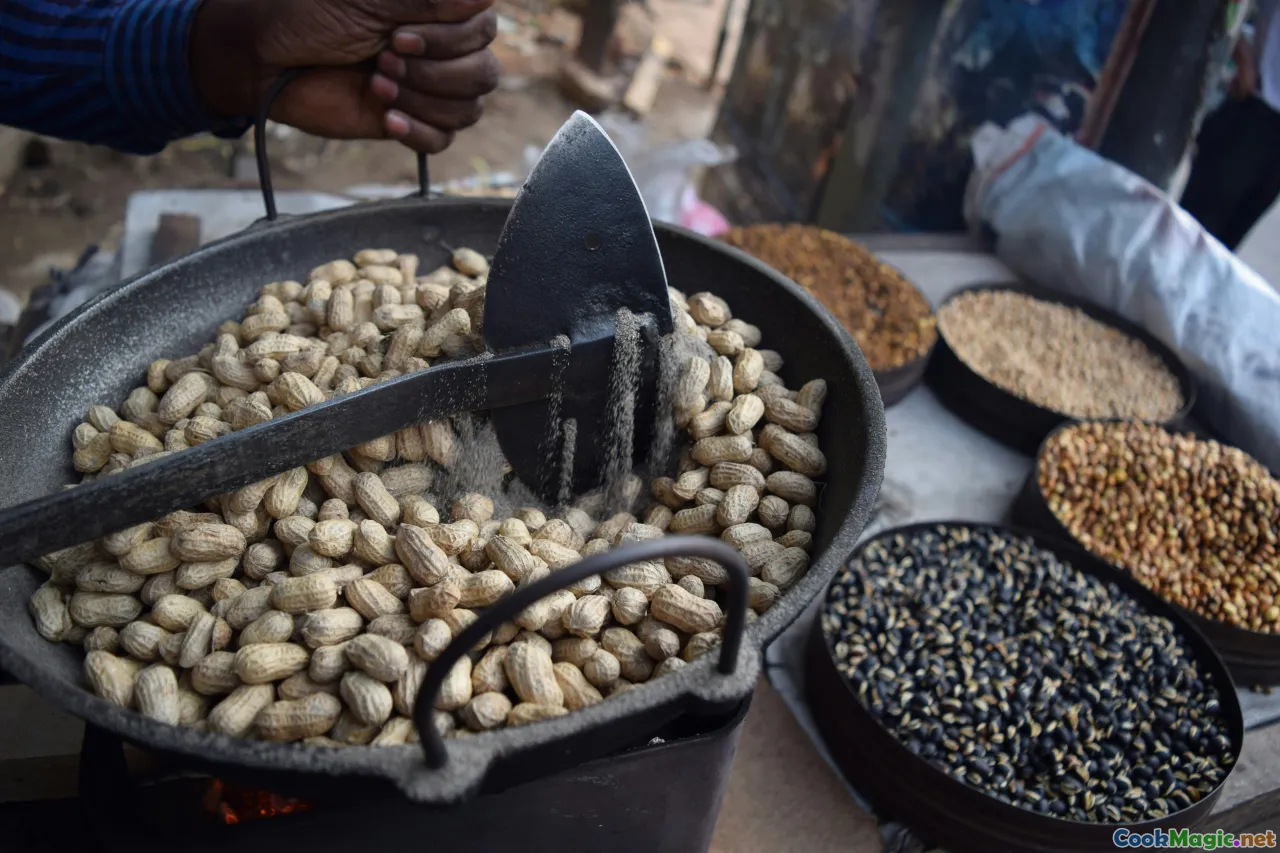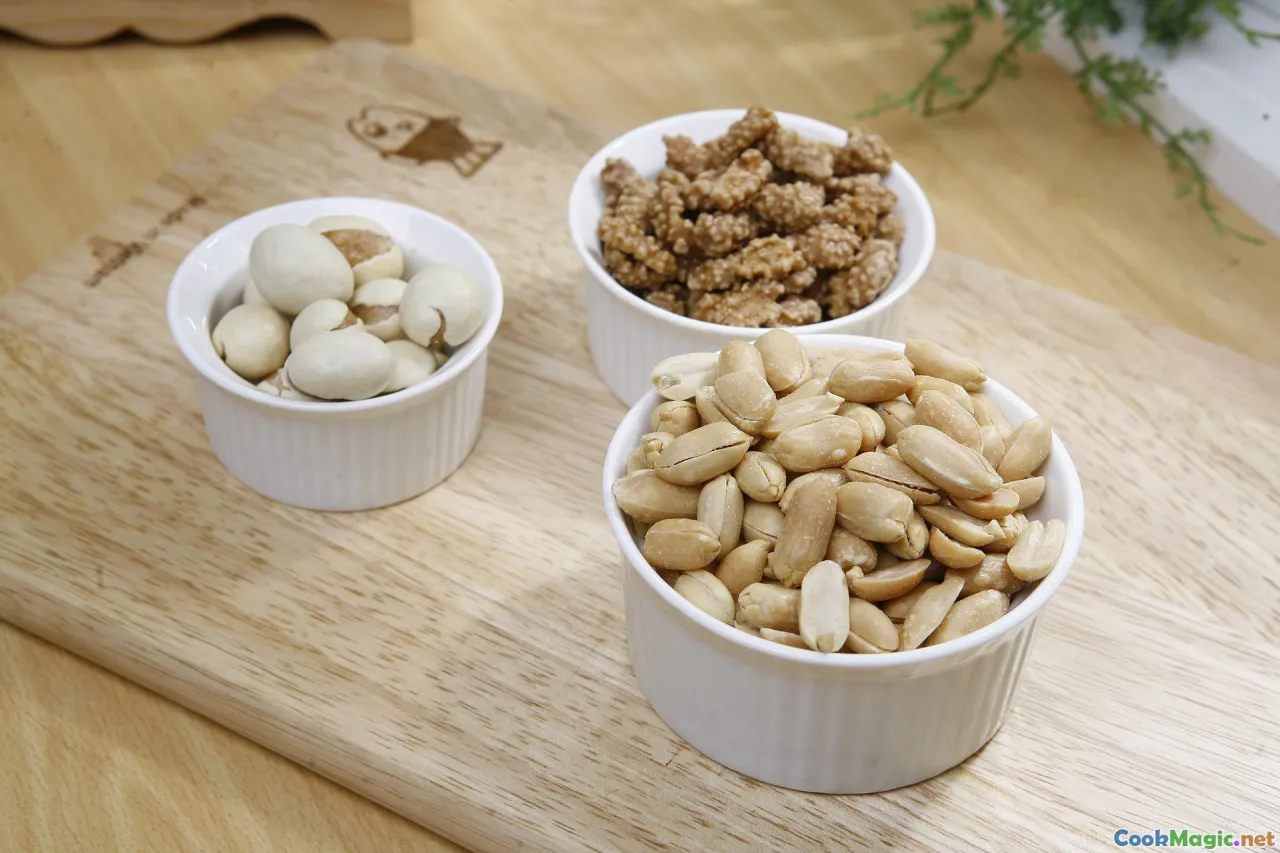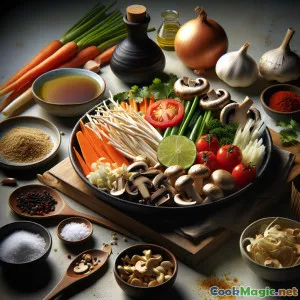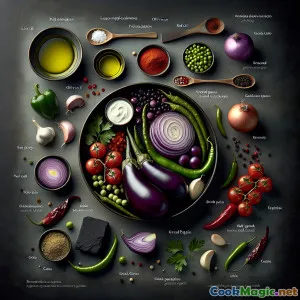
Assado Cremoso de Banana com Nozes Binyebwa
(Creamy Binyebwa Nutty Plantain Bake)
(0 Avaliações)0
15
agosto 26, 2025
Reportar um problema
Ingredientes
-
3 large Bananas maduras
(Yellow with some spots for subtle sweetness)
-
150 grams Manteiga de amendoim
(Smooth; natural, unsweetened preferred)
-
2 medium Tomates
(Diced, for base of sauce)
-
1 medium Cebola roxa
(Finamente picado)
-
2 large Dentes de alho
(Picado)
-
1 inch Gengibre fresco
(Peeled and finely chopped)
-
2 tbsp Óleo de cozinha
(Vegetable or sunflower oil)
-
250 ml Leite de coco
(adiciona cremosidade)
-
1 tbsp Suco de limão
(Fresh-squeezed, to brighten flavors)
-
40 grams Amendoins torrados picados
(For topping and texture)
-
2 tbsp Coentro
(Picado, para enfeitar)
-
1 tsp Sal
(Ajuste a gosto)
-
1/2 tsp Pimenta preta
(Moído na hora)
-
1/2 tsp Flocos de pimenta vermelha
(Opcional para calor)
(Yellow with some spots for subtle sweetness)
(Smooth; natural, unsweetened preferred)
(Diced, for base of sauce)
(Finamente picado)
(Picado)
(Peeled and finely chopped)
(Vegetable or sunflower oil)
(adiciona cremosidade)
(Fresh-squeezed, to brighten flavors)
(For topping and texture)
(Picado, para enfeitar)
(Ajuste a gosto)
(Moído na hora)
(Opcional para calor)
Nutrição
- Porções: 4
- Tamanho da Porção: 1 prato (300g)
- Calories: 540 kcal
- Carbohydrates: 0 g
- Protein: 13 g
- Fat: 27 g
- Fiber: 6 g
- Sugar: 19 g
- Sodium: 390 mg
- Cholesterol: 0 mg
- Calcium: 63 mg
- Iron: 2.5 mg
Instruções
-
1 - Preheat Oven and Prepare Dish:
Preheat the oven to 180°C (350°F). Lightly oil a medium baking dish (about 9-inch square or equivalent).
-
2 - Slice Plantains:
Peel the plantains and slice them into diagonal rounds, about 1 cm thick.
-
3 - Sauté Aromatics:
Heat oil in a large skillet. Add the onion, garlic, and ginger. Cook over medium heat until softened and fragrant, about 3–4 minutes.
-
4 - Make Peanut Sauce:
Add diced tomatoes to the skillet and cook until just softened. Stir in peanut butter, coconut milk, lime juice, salt, and black pepper. Cook, stirring, until sauce is smooth. If too thick, add 50ml water to loosen.
-
5 - Layer Casserole:
Arrange half the plantain slices in the base of the baking dish. Pour over half the peanut sauce. Layer the remaining plantain slices and top with the rest of the sauce. Sprinkle with roasted peanuts and chili flakes, if using.
-
6 - Bake:
Cover the casserole with foil. Bake in the preheated oven for 20 minutes, then uncover and bake for 10 more minutes to allow the top to lightly brown.
-
7 - Garnish and Serve:
Remove from the oven, let cool for a few minutes, sprinkle chopped cilantro on top, and serve warm.
Preheat the oven to 180°C (350°F). Lightly oil a medium baking dish (about 9-inch square or equivalent).
Peel the plantains and slice them into diagonal rounds, about 1 cm thick.
Heat oil in a large skillet. Add the onion, garlic, and ginger. Cook over medium heat until softened and fragrant, about 3–4 minutes.
Add diced tomatoes to the skillet and cook until just softened. Stir in peanut butter, coconut milk, lime juice, salt, and black pepper. Cook, stirring, until sauce is smooth. If too thick, add 50ml water to loosen.
Arrange half the plantain slices in the base of the baking dish. Pour over half the peanut sauce. Layer the remaining plantain slices and top with the rest of the sauce. Sprinkle with roasted peanuts and chili flakes, if using.
Cover the casserole with foil. Bake in the preheated oven for 20 minutes, then uncover and bake for 10 more minutes to allow the top to lightly brown.
Remove from the oven, let cool for a few minutes, sprinkle chopped cilantro on top, and serve warm.
Mais sobre: Assado Cremoso de Banana com Nozes Binyebwa
Binyebwa Nutty Plantain Casserole
Binyebwa, referred to in various parts of East and Central Africa, is the delightfully creamy peanut sauce that forms the basis of many beloved Ugandan recipes. In Binyebwa Nutty Plantain Casserole, the comfort food essence of traditional binyebwa collides with globally loved plantain to create a warming casserole that's as suitable for a celebratory feast as it is for a weeknight dinner.
Cultural Significance
Peanuts, or groundnuts, are deeply woven into Ugandan cuisine, often cooked into stews and sauces that showcase their fat, protein, and nutty aroma. Across Uganda and its Lake Victoria neighbors, binyebwa sauce may accompany starchy staples and hearty root vegetable dishes at banquets, homes, and street-side eateries alike. When paired with plantains—a tropical staple high in complex carbs and vitamins—you get a dish that's celebratory yet comforting, nutritious yet indulgent, and always crowd-pleasing.
Recipe Riff & Creative Twist
This casserole interprets these classic flavors in a dish that draws upon both African tradition and oven-baked comfort food, using layer baking for a rich, texturally interesting result. The slices of sweet, soft, ripe plantains absorb the moisture and flavor from the peanut-tomato-coconut sauce, while a roasted peanut topping adds pleasing crunch. Notes of fresh ginger and lime turn up the complexity and balance oud the sauce’s richness. A touch of chili, if you like a little fire, will transport your tastebuds.
You’ll notice the addition of coconut milk, which isn't always traditional for Ugandan binyebwa, but it breathes a silken body and subtle sweetness into the sauce, referencing curry traditions from East Africa’s coastal cultures. Meanwhile, a baking technique gives those plantain slices a beautifully melting interior and slightly crisped edges.
Tips & Serving Suggestions
-
For the Best Plantains: Use ripe (yellow with some spots but still slightly firm) plantains, as green ones aren’t sweet or soft enough for this casserole. Avoid overripe, black plantains—they’ll be too mushy.
-
Peanut Alternatives: For allergy-sensitive households, sunflower seed butter works with similar texture (though it tastes very different).
-
Layer It Up: Try alternating thin layers of plantain and sauce for company-ready presentation. For a full meal, serve alongside steamed rice, millet porridge, or a green vegetable.
-
Make Ahead: This casserole can be prepared in advance and reheated gently, making it a smart option for gatherings. Flavors may intensify overnight.
-
Optional Twists: Add sautéed spinach or leafy greens between the layers, or stir through smoked paprika for smokiness.
Personal Notes
Many visiting this dish also discover its approachable, savory-sweet flavor is a universal comfort. For me, growing up with sunny plantains and their mellow perfume in the kitchen brings instant nostalgia. Meanwhile, creamy peanut sauces (West African maafe, Southeast Asian satay) are, for many food lovers, a rare treat—a casserole-style dish like Binyebwa Nutty Plantain Casserole combines the best of both worlds. It's nourishing, budget-friendly, and has the uncanny ability to satisfy young and old alike.
Why You'll Love It
Binyebwa Nutty Plantain Casserole stands out for its creative convergence of tradition and innovation. With every spoonful, you get creaminess, nutty depth, subtle spice, gentle sweetness, and a protein-packed punch. Next time you’ve got a few plantains and some peanut butter, try this African-inspired casserole and let it transport you—or your guests—straight to the heart of Uganda.

